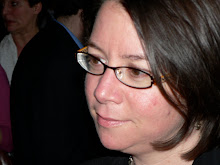Another question I asked Jordan in his high-school-interview session with me is how high school is different from middle school socially. Again, we can’t say if the differences he senses are middle vs. high school, small vs. large, private vs. public, or just from one school to another – but it’s interesting anyway!
The most obvious social difference between Nathan Hale and Billings is that one has more than ten times as many students as the other. Jordan could not possibly get to know all the people in his grade, much less in other grades. These many people divide themselves into many social groups. Jordan feels that this causes greater social pressure because people see where the lines are drawn, but also more opportunity because you have lots of choices of who to hang out with. I asked for an example, and he said that although he has a pretty supportive friend group, earlier in the school year people noticed his bangs. When he styled them differently, he got a great reaction: lots of compliments, and people were visibly more friendly and interested in him. “It’s a little thing,” he says, “but it’s kind of all like that.” At Billings, maybe one or two people would have said something, but it was only one or two people.
Jordan also observes that there are some friend groups that you just can’t get into if you’re not that kind of person. You can’t hang with the basketball players if you don’t play basketball. Jordan himself is interested in the skateboarding group, because they seem really supportive and fun and he’d like to get to know them better, but he’d have to learn to skate first.
Jordan had not heard the term “cliques,” so I explained it (a small, closed social group organized around a few shared interests). Did you know the term comes from “claque,” which is what the nineteenth-century Parisians called the people who were paid to applaud theatrical performances?
Saturday, February 23, 2019
Subscribe to:
Post Comments (Atom)

No comments:
Post a Comment